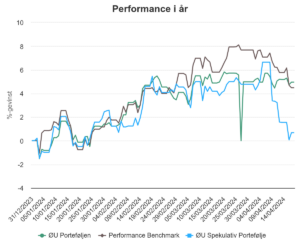Fra Steen Jakobsen Saxo Bank:
- he 19th National Congress of the Communist Party of China starts next week
- It will be the single biggest event this year, of unprecedented significance
- Xi will cement his position and secure his legacy at the Congress
- China is changing and has changed more than the market gives it credit for
- Under Trump, the United States has abdicated its global role
- What we are witnessing is a geopolitical reality show
- The rise of China and the decline of the US will spawn a new FX king!

- Lower than expected growth for the next 18 months (while China converts its economy from export engine to one of productivity gains – President Xi wants 2010 GDP per capita doubled (Rule of 72= 72/7% GDP per year = 10 years) which means an objective of 7% growth per year, but most of this will be productivity driven which means investment first (hence lower growth), then higher.
- Reduction of pollution = electrification of cars – by 2030 100% of cars will be electric vehicles – this will catapult China to leadership in battery technology, E-engines, and pollution reduction. (Don’t forget that from 1900 to 1910/13 the US went from 100% horse carriages to 100% cars!)
- High ratio of R&D and innovation to gain leadership. China is already dominant, but will be even more so in E-commerce, payments and fintech. (See McKinsey report below).
- Slow gradual openness in capital account, more access to the market for foreigners and a big focus on converting global trade from USD to CNY.
- Weaker CNY post-congress.
- Major negative credit and growth impact on the rest of the world.
Change comes much faster than we human beings like – our brains are simply not designed to accept quick changes, and one of the few shortcomings of the brain is that it likes (and uses) the recent past to extrapolate the future. We think in a linear fashion but world the evolves in a super log-normal way. An excellent example is seen in the pictures below from New York in 1900 and 1913. Notice the difference in street traffic in the space of just 13 years.


- …a constant theme of Xi Jinping’s speeches is the need for innovation.
- …he (President Xi) was in charge of the drafting of the report delivered to the 18th Party Congress by his predecessor Hu Jintao.
- The deeper purposes of the Congress and the report are to reaffirm the Party’s importance to itself and to the nation.
- “Ecological Construction‟, added “Making Great Efforts to Promote Ecological Progress”. Neither addition is surprising, given that Party legitimacy would be threatened by popular dissatisfaction if areas such as education, health, social security, as well as pollution and food safety, were not put higher up the political priority list.
There are likely to be 13 major sections….(See table below for 16th,17th and 18th Congress comparison…)
The Past Five Years. To judge from the past, this section will aim to set a positive tone in order to remind the Party and people that only the Party could have achieved China’s rise.
Building a moderately prosperous society in all respects. Traditionally, this short section looks forward to the big tasks of the next five years, mainly in the area of the “Five Constructions”(economic, political, cultural, social and environmental). It is likely also to remind cadres of the importance of themes dear to Xi Jinping’s heart, such as poverty alleviation, innovation, Belt and Road Initiative, corruption and Party discipline. And judging by the meetings of late July, the main theme, not surprisingly, will be稳中求进 “progress amid stability”, a phrase we shall see often.
The environment and ecology. This was a new section in the 18th Congress Report reflecting ecology’s rise to become one of the five “constructions” and its addition to the Party constitution. Quite apart from the lamentable state of the environment itself, a major driver for inclusion was the threat to social stability: according to some Chinese academics, around half of protests involving over 10,000 people had an environmental cause. (This is a new key in our opinion!)
Party building. This is always a lengthy and important section, hardly surprising, given that this is, after all, the Party’s congress and given that “comprehensively [and] strictly govern the Party‟ is one of the “Four Comprehensives”. The 18th Congress report was much harder and more urgent than its predecessors on ideals, faith in Party ideology, working for the people, corruption and discipline. This report is likely to be harder still. Over his first five years Xi has not just launched an unending and deep war on corruption, but also carried out a series of campaigns to instill discipline and cut abuse of public funds by cadres. It is traditional to have a section on intra-Party democracy and Party unity; we can expect the former to be more by way of lip-service, the latter to feature prominently. Xi will undoubtedly recommit to the war on corruption and is likely to doff his cap in the direction of the new National Supervision Commission, which is due to start work in earnest next March. Nor should it be forgotten that the Party Congress elects a new Central Commission for Discipline and Inspection.


“…but it will give an idea of how he views progress towards those reforms, the priority of tasks needed to ensure their full delivery over the next five years, his political thinking, and perhaps his perception of problems. Foremost among those are implementation (by officials) and trust (of the people). Xi and Premier Li Keqiang have spent much time in the last few years railing against vested interests and failure to implement set down policies. Trust from the people in the Party is in short supply. One of the purposes of the Report is to show the people that it is right to entrust governance to a single party. Most people buy the line that under the CCP China has taken back its rightful place in the world; they are less persuaded by the claim that the Party rules in their, rather than its own, interests. That could be a worry if economic or environmental factors set back further progress towards prosperity’”.
It’s important to understand that the “economic plan” for China in the next 5 years is already in place as the 13th five-year plan was initiated in July 2016 – there are a mere 219 pages to read up for you…. (Link – China Five-year plan).

- Marxism-Leninism, Mao Zedong Thought, Deng Xiaoping Theory, the Theory of Three Represents, and the Scientific Outlook on Development; and put into practice the guiding principles from General Secretary Xi Jinping’s major addresses.
- The Chinese Dream of the rejuvenation of the nation and the core socialist values have gained a firm place in people’s hearts. China’s soft power has continued to become stronger. Notable achievements have been made in military reform with Chinese characteristics, and new steps have been taken to strengthen and revitalise the armed forces. A new phase has begun in the all-around strengthening of Party self-governance, and significant headway has been made in improving Party conduct and building a clean government. New heights have been reached in China’s economic strength, scientific and technological capabilities, defense capabilities, and international influence.
- However, the need has become more pressing to improve the quality and efficiency of growth and transform and upgrade the economy. As the economy is experiencing a new normal of growth, there is a clearer trend toward a more advanced form of growth, improved divisions of labour, and a more rational structure. With the structure of consumption being more rapidly upgraded, broad market space, a strong material foundation, a complete industrial structure, an ample supply of funds, and abundant human capital, along with the cumulative effects of innovation that are beginning to show, our overall strengths are still notable. A new style of industrialisation, information technology adoption, urbanisation, and agricultural modernisation are experiencing deeper development, new drivers of growth are in the making, and new areas, poles, and belts of growth are becoming stronger. All-around efforts to deepen reform and make progress in the law-based governance of the country are unleashing new dynamism and bringing new vitality.
- Maintain a medium-high rate of growth. While working to achieve more balanced, inclusive, and sustainable development, we need to ensure that China’s 2010 GDP and per capita personal income double by 2020, that major economic indicators are balanced, and that the quality and efficiency of development is significantly improved. Production will move toward the medium-high end, significant progress will be made in modernising agriculture, information technology will be further integrated into industrialisation, advanced manufacturing and strategic emerging industries will develop more rapidly, new industries and new forms of business will keep growing, and the service sector will come to account for a greater proportion of GDP.
- Achieve significant results in innovation-driven development. We will pursue innovation-driven development, ensure that business startups and innovation flourish, and see that total factor productivity is markedly improved. Science and technology will become more deeply embedded in the economy, the ingredients needed for innovation will be allocated to greater effect, major breakthroughs will be made in core technologies in key sectors, and China’s capacity for innovation will see an all-around improvement. Fulfillment of these goals will help China become a talent-rich country of innovation.
The focus on innovation and the progress of it is somewhat surprising, at least to me:
McKinsey & Company’s report “China’s digital economy – a leading global force” is almost shocking!

Note: China has gone from 0.4% in 2005 to 42% in 2016, in mobile payment the Chinese do 11x more than the Americans, and most surprising of all, in Global Unicorns (start ups > $1 bn) China has 34 vs. US 46 but mostly the same valuation!
In terms of investment China is also already a global leader:

The context here is that China is 1/3 of the global growth impulse (source: IMF) and indirectly 50% of credit – our own Christopher Dembik tracks the China Credit Impulse, which is the flow of credit:

This chart leads real economy by 9-12 months in other words. Nine months from now in mid-2018 China will be in severe slowdown, one which I believe China is creating through control of the banking system in order to to set up the release of productivity investments, where China comes from a level which is 20-30% of the US. The next five years will be one big technology R&D and innovation drive under “Chinese Characterstics”.


Note: The slowdown in China is already dominant – add Credit Impulse and we have a negative contribution to global growth.

Note: CNY is low down as a basket, but higher vs. USD “naked”. Overall China’s basket will have to drive lower in value to the tune of 1-2% per year.

Source: Connectopraphy
Now China also wants a new world order in commodities. China will allow exporters to avoid USD payments for CNY or…. gold! A new gold standard? (LINK: Crude, Gold, CNY)

China is enjoying US indecision on foreign policy, which seems to be driven by indecision, spur of the moment changes and randomness. Opposite this sits China, with its One Belt, One Road, Asian Development Bank and the Shanghai Cooperation Organisation – there are in excess of three billion people in this alliance – and with Pakistan and India joining in 2015 that number will be four billion by 2050.
Steen Jakobsen is chief economist and CIO at Saxo Bank


